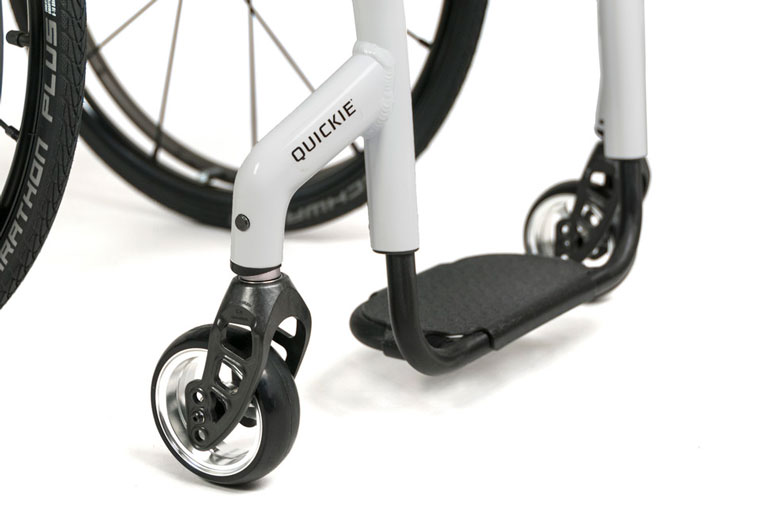A couple of weeks ago I was talking with a young man about his upcoming evaluation for a new rigid ultra lightweight wheelchair. He shared with me that he sustained an incomplete spinal cord injury nearly nine years ago as the result of an automobile accident. Not only has wheelchair technology evolved since his last fitting, but his needs have evolved, too. We briefly discussed a few of the recent innovative technologies released by Sunrise Medical including the Freestyle back, carbon fiber backrest, carbon fiber footplate, and caster housing position options. As we wrapped up our conversation, I reminded the young man that it is essential that he actively participate in the evaluation and ask questions to ensure the best wheelchair, back, cushion, and other components are selected to meet his needs. After all his wheelchair will be designed and manufactured specifically for him.
Reflecting back on that conversation, I recalled one of the topics the young man was most intrigued by were the three caster housing positions available on the Quickie Q7 series of wheelchairs. In order to provide a thorough overview of the three positions, I asked veteran Sunrise Medical team member and Clinical Rehab Manager, Rob Agostino, to provide some insight:

Why all the fuss over caster housing positions? Just about all manufacturers give you the ability to address front stability with frame length. Quickie offers two different frame lengths on our rigid chairs: the longer Classic frame and the more compact Standard frame. But we felt that an end user who needs more stability shouldn’t be forced into a longer frame when he/she could take advantage of the more compact Standard frame with caster housing position 1. On the flip side, if a user requires a longer frame for better hand positioning for an activity such as transfers, caster position 2 or 3 may help the user get a bit closer to the bed or chair. Let’s take a deeper dive into all three caster housing position options available on the Quickie Q7 series wheelchairs:
Caster Housing Position 3
Position 3 is designed to work with 3” to 5” casters. This caster position will allow the user to position himself very close to beds or chairs for easy transfers and offers a very tight turning radius by sweeping the casters rearward, placing him closer to the rear wheels, but may not provide enough stability for some users. This means that if the user descends a steep slope, leans forward to retrieve an item, or performs a pressure relief by leaning forward, he may report not feeling stable. If this is the case, then looking at Position 2 or 3 may be a good idea.
Caster Housing Position 2
Position 2 is often considered a "happy medium" of caster positions. It is available with multiple caster sizes. In addition it offers more stability than position 3, and less stability than position 1.
Caster Housing Position 1
Position 1 is the opposite of position 3. This position is only available with 3" or 4" casters for footrest clearance, but allows for maximum forward and lateral stability. This is so stable that a user can typically stand on the footrest without the chair tipping forward, but comes with a slight penalty of positioning the wheels further forward and outward. This will place the chair a bit further away from a bed or chair, increasing the difficulty of transfers for some.
There is no right or wrong choice when it comes to how a user dials in the stability of his wheelchair, but at Sunrise, we believe that the choice should be in your hands and that options are a good thing.
- Rob Agostino, Clinical Rehab Manager
Thank you for reading our blog! We love hearing from you, so please do not hesitate to reach out to us. We encourage you to leave a comment below.
Always remember at the end of the day, your client is your number one priority!
- Angie
Follow Angie on Twitter @ATigerKiger